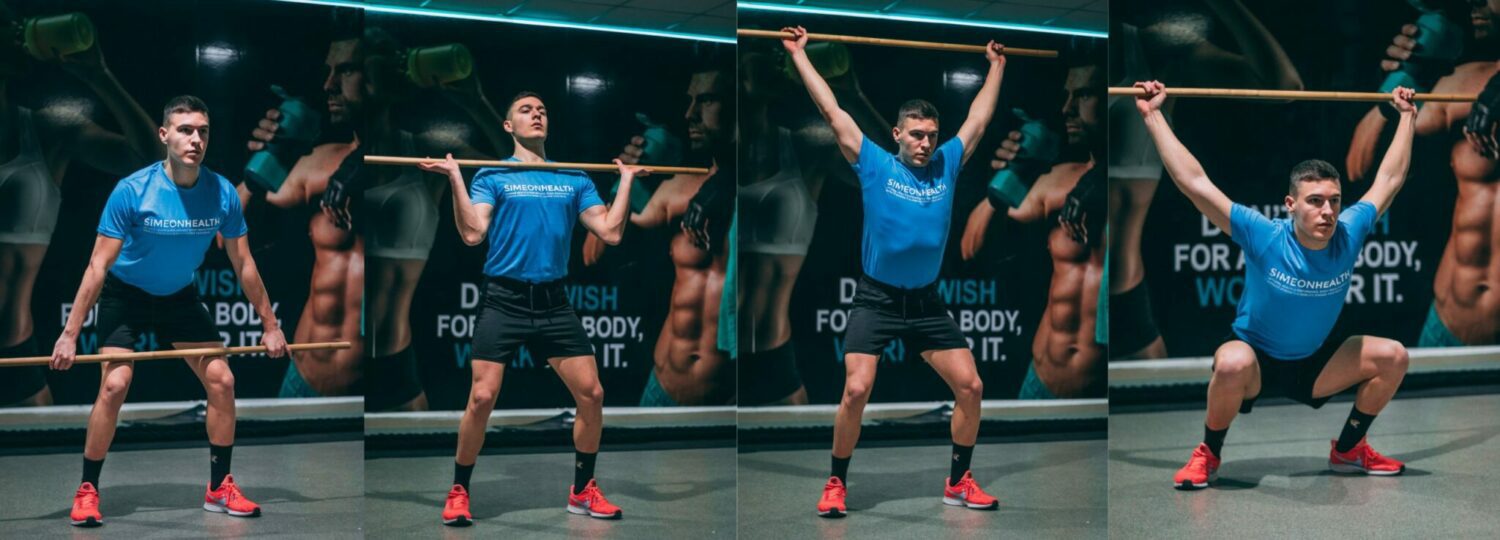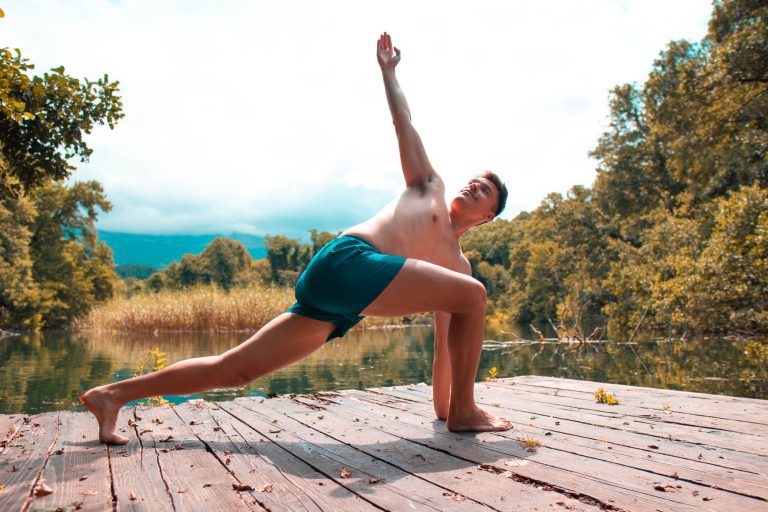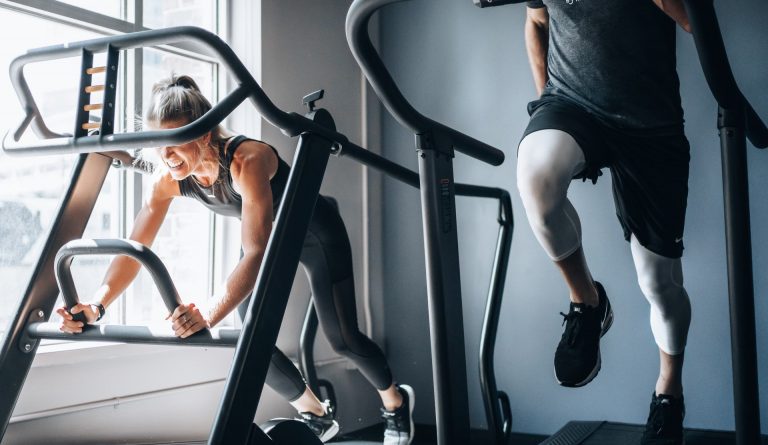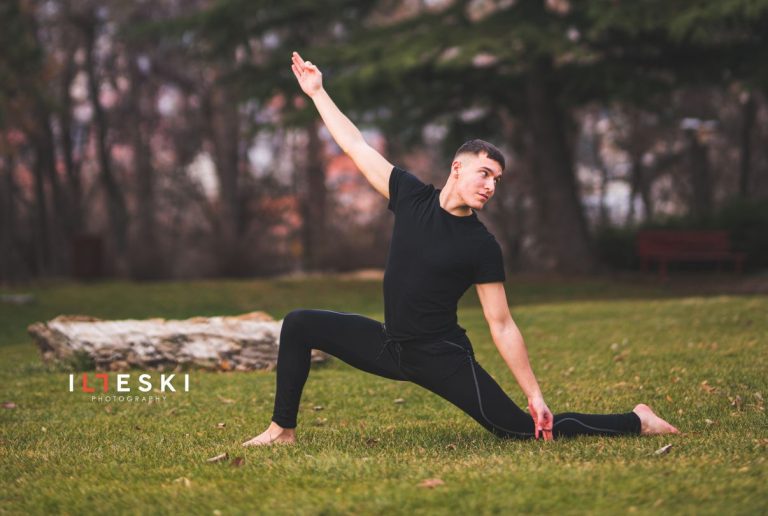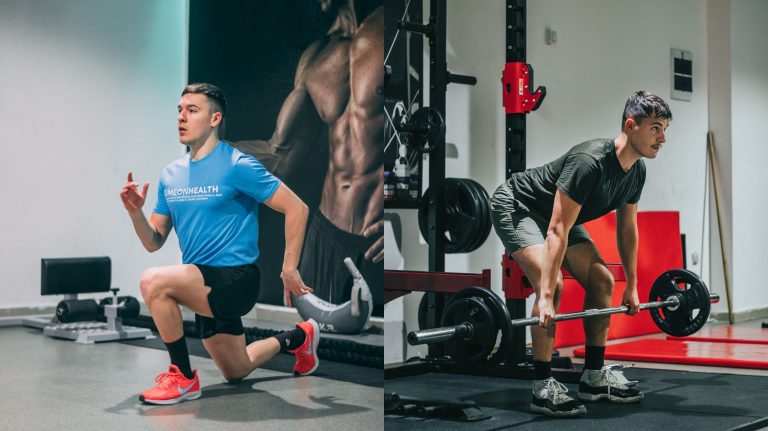Full Body Functional Warm Up Protocol for Weightlifting
Warm-up is an essential part of any workout, a preparatory exercise protocol that in fact, might be the most important one. There are many benefits of incorporating full body functional warm up, from both injury-prevention and mobility-enhancement perspectives.
Why is Warm up so Important
Research shows that warm-up can evoke temperature, metabolic, neural, and psychological effects like increased anaerobic metabolism, elevated oxygen uptake kinetics, and post-activation potentiation. (1)
Warm-up gets your body prepared for strenuous activity. Usually, if we work out in the mornings, a warm-up is crucial to get us started, especially with weightlifting. Your body is a very complex system that is built with so many connective tissues, that the temperature of your body can significantly affect your exercise performance.
There are many different physical, physiological, and psychological changes that occur in your body during warm-up that make you a lot more efficient when exercising while at the same time properly scaling the intensity and preventing injury. This is why we created a weightlifting warm-up protocol.
Passive vs Active Warm-up
Passive warm-up is not as effective as an active or dynamic warm-up, mainly because the effects of the warm-up are done by increasing body temperature.
Short stretches can improve joint mobility, muscle elasticity, and movement efficiency. But static stretching pre-workout can actually hinder exercise performance.
On the other hand, dynamic warm-up that includes light levels of low-aerobic activity (cardio) like running, jumping rope, or athletic warm-up can positively affect our performance later. Now adding some dynamic stretches to that active warm-up which already caused an increase in core temperature can improve our mobility and movement fluidity.
Dynamic warm-up is a part of functional fitness that can be implemented pre-workout, and is arguably one of the most important pre-requisites for compound weightlifting exercises.
The 8 Effects of Warming-up
Proper Warm-up has various effects on your body, both physically and mentally. As a whole complex, your body requires a warming-up protocol before every strenuous workout. Some of the most important effects that warm-up has on our bodies are:
Temperature
Circulation
Energy
Mobility
Oxygen
Activation
Strength
Hormones
Increased Temperature
Increasing your body temperature lets your body know that you will be working out while at the same time allowing the body to activate temperature homeostasis mechanisms. This increased temperature translates into better muscle elasticity, higher mobility, and fluidity in your movement, mainly due to improved joint range of motion (ROM).
Improved Circulation
As temperature increases our blood flow improves. This causes vasodilatation, which is opening up your arteries, enabling more blood to travel through your body. This increases oxygen consumption which leads to higher energy creation, as well as more food (Creatine, Glucose) for the muscle. The blood flow changes, internal organ blood flow decreases, and more blood goes into the muscles, peripherally. Training can increase acetylcholine-stimulated endothelium-derived Nitric Oxide. This may seem complex but it’s just another way of saying that NO (nitric Oxide) is increased, while increases the diameter of our vessels, improving blood flow. (2)
Increasing energy creation is one of the main mechanisms we are feeling very energetic during a workout. Think about how you feel before and after a workout, as opposed to during it, more tired right? This is because, during an activity, your body activates many of these mechanisms for energy creation. Some of them have to do with releasing specific hormones, other with circulation or oxygen transport. The energy rates of a metabolic chemical reaction are reduced, while blood flow in the muscle increases. (3)
Improved Mobility & Flexibility
One of the main warm-up effects on our body is improved muscle functionality. This includes the ability to produce more strength, to allow for better joint mobility (range of motion) and muscle elasticity (which allows for elastic energy storage). Warming up reduces muscle viscosity, making us more efficient and fluid movers.
Increased Oxygen Uptake
As temperature increases, there is higher dissociation of oxygen from hemoglobin and myoglobin. This means that the muscle gets more oxygen, making it more efficient in producing more energy. (4) Increasing oxygen uptake mainly improves aerobic performance but is a crucial part of anaerobic exercise warm-up too.
Nervous System preparation
During the warm-up, we stimulate our sympathetic nervous system which is mainly focused on energy production, run, and gun situation. Hormones such as epinephrine and adrenaline are released, allowing for a better breakdown of carbohydrates and fats, which allows more efficient energy production. Nerve receptor sensitivity increases as well as the speed of nerve impulses. This makes us quicker and more explosive, plus allows us to produce higher forces due to increased nerve-conduction rate. (5)
Increased Strength Performance
By structuring our warm-up in a way that we simulate a Fight or Flight situation, we can further increase our strength performance due to increased production of cortisol and adrenaline. Catecholamine hormones can speed up nerve signal transmission, elevate cardiac output, and increase glycogen breakdown. (6)
increasing force output has a lot to do with nerve sensitivity and the ability to recruit or activate more muscle fibers faster. In fitness, we refer to this as Post-Activation Potentiation, which is a short-term improvement in performance or force output. We can do this by screaming, squeezing hard, or jumping.
Hormonal Changes
Warming our bodies up is followed by the release of hormones such as adrenaline and cortisol, which stimulate fat-breakdown and get us moving. But also good-feeling hormones known as endorphins, such as serotonin and dopamine increase during exercise which is the main reason why we feel good after a workout and motivated during one.
The insulin sensitivity of your muscles improves, making them more efficient in glucose uptake, during and after a workout. Anabolic hormones like Testosterone and HGH are also released to stimulate tissue growth and regeneration afterward.
Warming our bodies up is followed by the release of hormones such as adrenaline and cortisol, which stimulate fat breakdown and get us moving.
Fun Fact
Increasing your body temperature lets your body know that you will be working out while at the same time allowing the body to activate temperature homeostasis mechanisms. This increased temperature translates into better muscle elasticity, higher mobility, and fluidity in your movement, mainly due to improved joint range of motion (ROM).
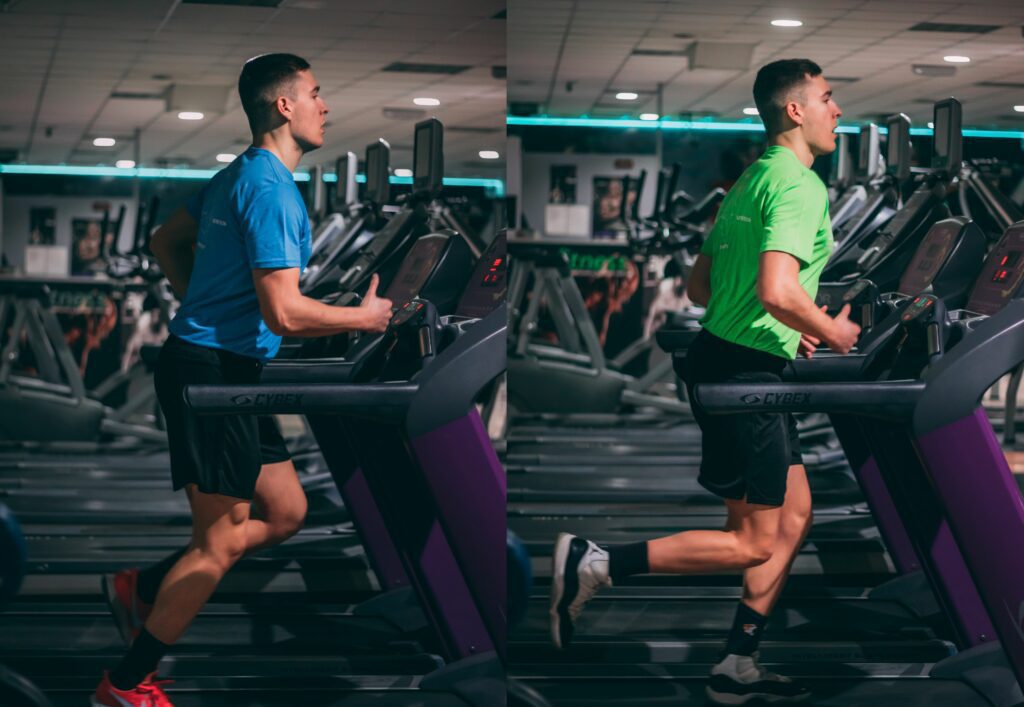
Goals of Warming-up
The main 2 goals of warming up are preventing injury and improving exercise performance. Let’s see what research has to say on this.
Reduce the Risk of Injury
The notion that a proper warm-up is a must to prevent injury has been in the fitness and sports industry for ages. Science shows that even though there isn’t very hard evidence to support this, most research favors a lower risk of injury due to warm-up. (7)
Some of the reasons behind this are improved muscular elasticity, joint mobility, and range of motion as well as improved coordination, balance, and muscle co-activation.
The whole warm-up especially stretching should be done prior to and within 15 minutes of the main activity. (8)
Another great study on neuro-muscular warm-up strategies was shown pretty effective in preventing lower limb injury. This warm-up includes landing drills, stretches, specific exercises, balance exercises, and agility & strength drills (9)
Improve Exercise Performance
As stated before, warm-up prepares our body for activity. It has the potential to reduce the viscosity of muscles, improve peripheral blood flow, increase energy production & oxygen transport, and assist neuromuscular facilitation. A combination of these factors is shown to improve or support optimal performance.
Meta-analysis shows that in 79% of the criteria that were examined, the warm-up was associated with improvement in performance. (10)
Both passive and active warm-ups will have a subsequent effect on exercise performance. They were shown to affect ATP turnover, oxygen uptake kinetics, and muscle cross-bridge formation/cycling rate. (11)
The recommendation is to start with an active light cardio warm-up, lasting less than 15 minutes plus activation exercises like jumps, or short sprints. Of course, this protocol is more athletic-performance-based, which will not exactly apply to weightlifting.
There is also a relation between high-load dynamic warm-up on improvement in strength and power performance, tested on the upper body. Static stretching wasn’t as effective, nor was passive heating and cooling. (12)
Research Limitation
*Studies have some limitations, important to evaluate the validity of their results. Here’s a highlight of some and NOT ALL studies (and limitation), shown in this article, for context.
- Aged data or data older than 10 years *1985, 2003, 2006, 2010, 2012, etc.
- Dominant research in women *in one study.
- Tests done in specific population makes it hard to generalize *teenage female football players, military recruits.
- Studied effects of training on Nitric Oxide in animals *spontaneously hypertensive rats and Wistar-Kyoto rats.
- Further, more complex, well-studied research needed to clarify potential performance-improvement and injury-prevention of warm-up *shows up in more studies.
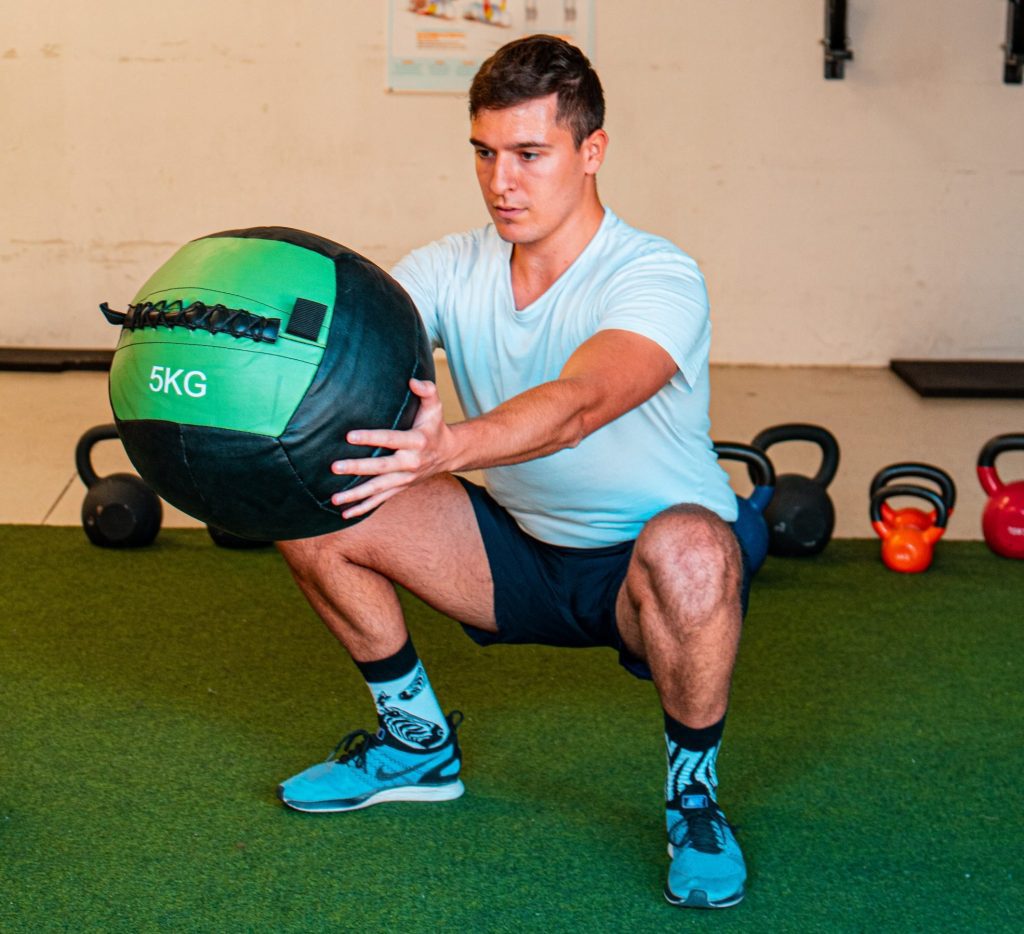
Weightlifting Warm Up Protocol
To warm up properly before weightlifting, it is important to know what kind of exercises you will be doing.
Leg Day
Push Workout
If you have leg day and you mostly do squats, lunges, hamstring curls, and quadriceps extensions your main priority will be hip mobility
In case you are doing a push workout, like school crushers, bench press, and overhead press you should probably focus on warming up, stabilizing, and improving the mobility of your shoulders.
This protocol is a full-body warm-up and it takes around 20 minutes to be done, but think of it as the first part of the main Workout. Of course, depending on your needs and individual desires, as well as workout requirements you can take some elements off or add some new ones.
We structure the warm-up in a way that we first raise our temperature, to get the physiological effects in time for the main workout. Then we do slight joint mobility, followed by dynamic low-impact strengthening exercises and dynamic or special stretches for higher ROM & Mobility.
Light Cardio
Duration: 10 minutes. This can be any aerobic activity such as jogging, skipping, running, jumping rope, or boxing. If you know how to measure VO2max % or Heart Rate, you should be in the first or second exercise zone, usually referred to as light cardio, standing at around 50-60% VO2max and 50-70% of HRmax. This should be an activity that you are not exerting extensive effort to keep up with, but it’s light and easy.
Basic Mobility
- Rotate your palms, both to the left and right x10 each
- Rotate your head, and make full and slow circles both to the left and right x10 reps.
- Rotate your shoulders, and make full and slow circles just backward x10 reps.
- Rotate your hip forward – Stand next to a wall, lift one leg, flex your knee and rotate your hips forward x10 each.
- Cat-Cow, on all fours, inhale push your head and glutes up – your belly down, then on the exhale you push in the opposite direction, head and glutes down, belly up x 10 slow repetitions.
Advanced Mobility
- Deep Prayer Squats, slowly down, place your elbows inside your knees, and push on the outside, then release and push to stand up x 10 reps.
- Lunge and Lean. Perform regular forward and deep lunges, extending your opposite hand overhead and leaning towards the side of the front leg x 5 reps each.
- Squat-To-Plank – From the stance, feet are hip-width apart, you slowly squat down, place your hands on the ground and walk them forward to plank, then walk your hands back and stand up x10 reps.
- Squat-Torso Rotation: squat down deep and place one hand on the floor, while you twist your torso so you extend the other arm overhead. Then go to the other side, x 5 reps each.
Strengthening Exercises
- Elbow-To-Knee: On all fours, knees, and hands down on the mat slowly extend your right arm and left leg, then push them back to the core (to touch) and extend again x7reps on each side.
- Bridge: lay down on your back, flex your knees and push through your heels to drive your hips up x10 reps.
- Planks: Set yourself on all fours, head facing the mat, push through your chest, keep a straight spine and isometrically hold this plank for 10-30 seconds x2 reps.
- Squat: Feet are hip-width apart, knees pointing in direction of your toes, spine is straight, squat down x10 reps.
- Side Lunges + Torso Rotation: Position yourself with feet wider than your hips, toes pointed forward. Slowly lunge to the right side (right knee flexion), place your right hand on the floor and rotate your torso so you extend the left-hand overhead. Go Back and repeat on the other side (left) x5 reps, slow on each side.
Practical Tip
In case any of these exercises are too hard or easy for you, increase or reduce the intensity accordingly. For example: do close-arm push-ups (harder) or knee-supported push-ups (easier), if running is too hard, slow down, if squats are too easy to pistol squat and if they are too hard, do support bench squats.
Dynamic Stretches
- Arms Across Chest: In a normal stance, place your arms in front of you and extend them backward, to a point where you feel light chest stretch and not sharp pain.
- Side Torso Bends: Place one stick on your back, grip with your hands wider than your shoulders, and slowly lean to one side, flex the core laterally to stretch the opposite side without letting your hips fall off-balance. Repeat 10 on each side.
- Downward Dog-Lunge: Start in downward dog, so hands and feet are on the floor, pushing your hips up and extending your spine, lift one leg and place it forward in a lunge position, then go back and repeat on the other side, 7 reps each.
- Knee Lunge+Torso Rotation: Lunge down with your right foot forward, and let your left knee support you on the floor. Place your right hand next to your right foot on the inside and rotate your torso extending your left arm overhead. Then place your left hand down and rotate your torso on the other side, extending your right arm overhead. After 5 repetitions with each arm, do it with the left leg in front, the right knee on the floor.
Key Points
- Warm-up is a crucial preparatory exercise protocol that prepares our body for physical activity.
- A warm-up can improve blood flow to the muscles, increase core temperature, and energy creation efficiency.
- It has many effects on physiological, physical, metabolically, neurological and psychological level.
- Activity causes a release of catecholamines like adrenaline and norepinephrine which increase energy production, fat breakdown, and glucose uptake.
- Active or Dynamic Warm-up is more effective in performance improvement and injury prevention than Passive Stretching.
- An effective warm-up protocol includes Light Cardio, Basic Mobility, Advanced Mobility, Strengthening exercises, and Dynamic or Special Stretches.
Frequently Asked Questions
What is a good warm-up?
A good warm-up is an efficient pre-workout protocol that allows your body to perform the exercise. It is made up of cardio work, dynamic stretching, and mobility drills.
Does warm-up help prevent injury in sports?
Yes, warm-up can prevent overstretching of the muscle as well as improve mobility of our joint, plus aid in coordination, co-activation, and balance improvements if proper agility/balancing drills are incorporated.
Is warm-up important and why?
Because without it, your body is not fully prepared to optimally function at its highest level. Meaning you have low joint fluidity and mobility, low core temperature, and muscle peripheral blood flow is not so good, as when we are warmed up. This harms your performance, increases injury risk, and is a too fast transition for your body.
What warm-up exercise I have to do before running?
Exercises that can raise your temperature like light running, an exercise that enhances your ankle stability and mobility, like ankle circles or toes-walk, plus a couple of quads stretches, lunges, and hip rotations. Going slowly into your running session can reduce the amount of lactate build-up, making it easier for you to run next time and regenerate faster.
How to warm up for heavy weightlifting?
After your proper warm-up session (cardio, mobility, dynamic stretching) you should ease into a weightlifting session by doing a couple of reps on each exercise with no weight, then minimal weight, progressing slowly to your desired weight.

